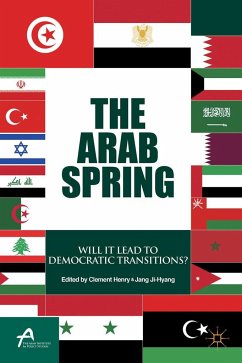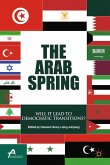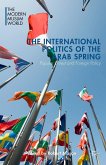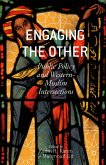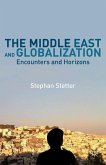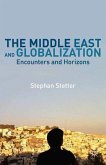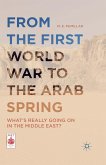Clement Henry, Ji-Hyang JangWill It Lead to Democratic Transitions?
The Arab Spring
Will It Lead to Democratic Transitions?
Herausgegeben:Henry, Clement; Jang, Ji-Hyang
Clement Henry, Ji-Hyang JangWill It Lead to Democratic Transitions?
The Arab Spring
Will It Lead to Democratic Transitions?
Herausgegeben:Henry, Clement; Jang, Ji-Hyang
- Gebundenes Buch
- Merkliste
- Auf die Merkliste
- Bewerten Bewerten
- Teilen
- Produkt teilen
- Produkterinnerung
- Produkterinnerung
This timely project on the Arab Spring was initiated to provide The Asan Institute's own assessment of the changes currently taking place in the region and their significant implications for South Korea.
Andere Kunden interessierten sich auch für
![The Arab Spring The Arab Spring]() Clement HenryThe Arab Spring38,99 €
Clement HenryThe Arab Spring38,99 €![The International Politics of the Arab Spring The International Politics of the Arab Spring]() The International Politics of the Arab Spring38,99 €
The International Politics of the Arab Spring38,99 €![Engaging the Other Engaging the Other]() Engaging the Other38,99 €
Engaging the Other38,99 €![The Middle East and Globalization The Middle East and Globalization]() Stephan StetterThe Middle East and Globalization38,99 €
Stephan StetterThe Middle East and Globalization38,99 €![The Middle East and Globalization The Middle East and Globalization]() Stephan StetterThe Middle East and Globalization38,99 €
Stephan StetterThe Middle East and Globalization38,99 €![From the First World War to the Arab Spring From the First World War to the Arab Spring]() M. E. McMillanFrom the First World War to the Arab Spring97,99 €
M. E. McMillanFrom the First World War to the Arab Spring97,99 €![Liberal States and the Freedom of Movement Liberal States and the Freedom of Movement]() Steffen MauLiberal States and the Freedom of Movement38,99 €
Steffen MauLiberal States and the Freedom of Movement38,99 €-
-
-
This timely project on the Arab Spring was initiated to provide The Asan Institute's own assessment of the changes currently taking place in the region and their significant implications for South Korea.
Produktdetails
- Produktdetails
- Asan-Palgrave Macmillan Series
- Verlag: Palgrave Macmillan / Palgrave Macmillan US / Springer Palgrave Macmillan
- Artikelnr. des Verlages: 978-1-137-34402-1
- 2012 edition
- Seitenzahl: 295
- Erscheinungstermin: 15. Oktober 2013
- Englisch
- Abmessung: 236mm x 152mm x 20mm
- Gewicht: 601g
- ISBN-13: 9781137344021
- ISBN-10: 1137344024
- Artikelnr.: 39103967
- Herstellerkennzeichnung
- Libri GmbH
- Europaallee 1
- 36244 Bad Hersfeld
- gpsr@libri.de
- Asan-Palgrave Macmillan Series
- Verlag: Palgrave Macmillan / Palgrave Macmillan US / Springer Palgrave Macmillan
- Artikelnr. des Verlages: 978-1-137-34402-1
- 2012 edition
- Seitenzahl: 295
- Erscheinungstermin: 15. Oktober 2013
- Englisch
- Abmessung: 236mm x 152mm x 20mm
- Gewicht: 601g
- ISBN-13: 9781137344021
- ISBN-10: 1137344024
- Artikelnr.: 39103967
- Herstellerkennzeichnung
- Libri GmbH
- Europaallee 1
- 36244 Bad Hersfeld
- gpsr@libri.de
Professor at University of Texas at Austin
Preface; Hahm Chaibong Introduction; Clement Henry, Jang Ji-Hyang and Robert P. Parks 1. Domestic Political Transition and Regional Spillover PART I 2. Early Adopters and Neighborhood Effects; Lisa Anderson 3. A Modest Transformation: Political Change in the Arab World after the 'Arab Spring'; Eva Bellin PART II: ECONOMIC CORRELATES OF POLITICAL MOBILIZATION 4. Political Economies of Transition; Clement Henry 5. Social Networks and Civil Society PART III 6. New Actors of the Revolution and the Political Transition in Tunisia; Mohamed Kerrou 7. Algeria and the Arab Uprisings; Robert P. Parks 8. The Plurality of Politics in Post-Revolutionary Iran; Arang Keshavarzian 9. Varieties of Political Islam PART IV 10. The Evolution of Islamist Movements; Fawaz Gerges 11. Islamic Capital and Democratic Deepening; Jang Ji-Hyang 12. Is the Turkish Model Relevant for the Middle East?; Kemal Kirisci 13. Protracted Violence in Syria and Libya PART V 14. Libya after the Civil War: The Legacy of the Past and Economic Reconstruction; Diederik Vandewalle 15. Syria, the Arab Uprisings, and the Political Economy of Authoritarian Resilience; Bassam Haddad 16. Dilemmas of the United States PART VI 17. US Middle East Policy and the 'Arab Spring'; Michael C. Hudson 18. The Obama Administration's Middle East Policy: Changing Priorities; Uzi Rabi Epilogue; Clement Henry, Jang Ji-Hyang and Peter Lee Appendix 2011 Asan Middle East Conference: Question and Answer Sections Index
Preface; Hahm Chaibong Introduction; Clement Henry, Jang Ji-Hyang and Robert P. Parks 1. Domestic Political Transition and Regional Spillover PART I 2. Early Adopters and Neighborhood Effects; Lisa Anderson 3. A Modest Transformation: Political Change in the Arab World after the 'Arab Spring'; Eva Bellin PART II: ECONOMIC CORRELATES OF POLITICAL MOBILIZATION 4. Political Economies of Transition; Clement Henry 5. Social Networks and Civil Society PART III 6. New Actors of the Revolution and the Political Transition in Tunisia; Mohamed Kerrou 7. Algeria and the Arab Uprisings; Robert P. Parks 8. The Plurality of Politics in Post-Revolutionary Iran; Arang Keshavarzian 9. Varieties of Political Islam PART IV 10. The Evolution of Islamist Movements; Fawaz Gerges 11. Islamic Capital and Democratic Deepening; Jang Ji-Hyang 12. Is the Turkish Model Relevant for the Middle East?; Kemal Kirisci 13. Protracted Violence in Syria and Libya PART V 14. Libya after the Civil War: The Legacy of the Past and Economic Reconstruction; Diederik Vandewalle 15. Syria, the Arab Uprisings, and the Political Economy of Authoritarian Resilience; Bassam Haddad 16. Dilemmas of the United States PART VI 17. US Middle East Policy and the 'Arab Spring'; Michael C. Hudson 18. The Obama Administration's Middle East Policy: Changing Priorities; Uzi Rabi Epilogue; Clement Henry, Jang Ji-Hyang and Peter Lee Appendix 2011 Asan Middle East Conference: Question and Answer Sections Index

